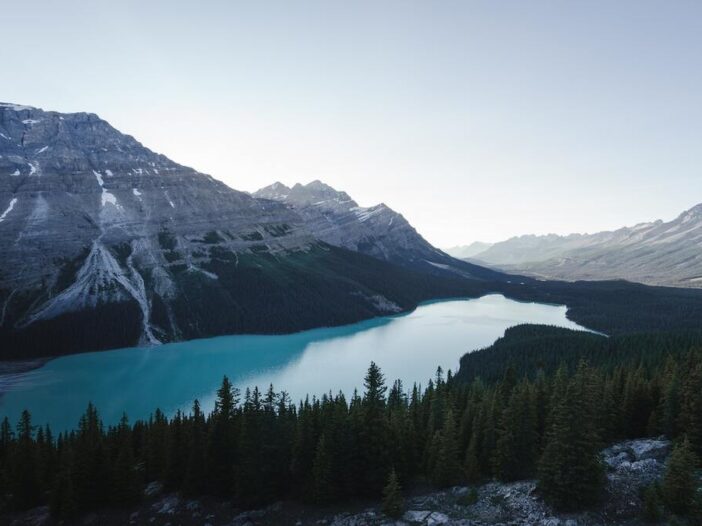
Alaska, the Last Frontier, is a land of unparalleled natural beauty and adventure. With its vast wilderness, diverse wildlife, and unique cultural heritage, this northernmost U.S. state offers an experience like no other. However, when embarking on a journey to Alaska, the choice of where to visit can be a pivotal decision. Every place in Alaska has its own distinct charm, showcasing a different facet of this incredible state’s allure. Therefore, we have compiled this comprehensive guide to the best places to visit in Alaska.
Read also: 20 Most Visited Cities In The World In 2023 | With Photos
What are the Best Places to Visit in Alaska?
- Anchorage
- Denali National Park and Preserve
- Kenai Fjords National Park
- Seward
- Fairbanks
- Alyeska Resort
- The Matanuska Glacier
- Talkeetna
- Lake Clark National Park
- Glacier Bay National Park
- The Kenai Peninsula
- Prince William Sound
- Homer
- Kodiak Island
- Katmai National Park
- Wrangell-St. Elias National Park
- Kennecott Mines National Historical Landmark
- Gates of the Arctic National Park and Preserve
- Chena Hot Springs
- Utqiagvik (formerly Barrow)
- The Alaska Highway
1. Anchorage

First on our list of the best places to visit in Alaska is Anchorage. Anchorage, the largest city in Alaska, is nestled in the heart of the state’s stunning wilderness. Anchorage’s unique blend of urban amenities and breathtaking natural beauty makes it a great destination.
Historical Background
Founded in 1914 as a railroad construction port, Anchorage has grown into a vibrant city. It played a significant role during World War II as a military base, which further accelerated its development.
Geography and Climate
Anchorage is framed by the Chugach Mountains to the east and the Cook Inlet to the west, which offers a striking contrast between towering peaks and the ocean’s edge. Its climate is characterized by cool summers and relatively mild winters, making it a year-round destination.
Landmarks and Attractions
Anchorage boasts numerous attractions, including the Anchorage Museum, the Alaska Native Heritage Center, and the Alaska Wildlife Conservation Center. The Tony Knowles Coastal Trail offers stunning views of the surrounding wilderness.
Outdoor Activities and Recreation
Anchorage is a haven for outdoor enthusiasts. From hiking and fishing to wildlife viewing and skiing, the options are endless. Nearby Chugach State Park and the Alaska Range offer a playground for adventurers.
2. Denali National Park and Preserve

Nestled in the heart of Alaska, Denali National Park and Preserve is a wilderness enthusiast’s paradise and home to North America’s tallest peak, Denali. This iconic destination offers an unparalleled opportunity to immerse yourself in pristine nature, breathtaking landscapes, and the untamed beauty of the Alaskan wilderness.
Historical Background
Established as Mount McKinley National Park in 1917, it was later renamed Denali National Park and Preserve in 1980. The park has a rich history of native cultures, exploration, and preservation efforts.
Geography and Climate
Encompassing over six million acres, Denali National Park features diverse terrain, including vast tundra, dense forests, and glaciers. The climate here is characterized by short summers and long, harsh winters, creating a unique and challenging environment.
Landmarks and Attractions
Denali itself is the star attraction, standing at a staggering 20,310 feet (6,194 meters). Visitors can explore the park through a network of hiking trails, with the opportunity to view wildlife like grizzly bears, moose, and caribou. The Eielson Visitor Center offers panoramic views of the mountain and surrounding wilderness.
Outdoor Activities and Recreation
The park is a haven for outdoor enthusiasts, offering activities such as hiking, mountaineering, backpacking, and wildlife watching. The annual Iditarod National Historic Trail Sled Dog Race is another highlight for those interested in Alaskan traditions.
3. Kenai Fjords National Park

Kenai Fjords National Park, located on the southern coast of the Kenai Peninsula, offers a mesmerizing glimpse into the dynamic world of glaciers, fjords, and marine life. This national park is a natural wonderland where the forces of nature have sculpted a breathtaking landscape over millennia.
Historical Background
Established in 1980, Kenai Fjords National Park has a rich history that dates back to native Alaskan cultures and early explorations by European settlers. Today, it stands as a testament to conservation efforts to preserve Alaska’s unique ecosystems.
Geography and Climate
The park encompasses nearly 670,000 acres of pristine wilderness, characterized by towering ice-capped peaks, glacial fjords, and dense coastal forests. The climate is maritime, featuring cool, wet winters and mild, rainy summers.
Landmarks and Attractions
One of the park’s crown jewels is the massive Harding Icefield, from which over 40 glaciers flow, including the famous Exit Glacier. The fjords themselves, such as Aialik Bay and Resurrection Bay, offer unparalleled opportunities for wildlife viewing and glacier exploration. The park is home to an array of marine life, including humpback whales, sea otters, and puffins.
Outdoor Activities and Recreation
Visitors to Kenai Fjords National Park can partake in a range of activities, from hiking along well-maintained trails to kayaking in the serene waters of the fjords. For the adventurous, guided glacier tours provide an up-close encounter with the park’s frozen giants.
4. Seward
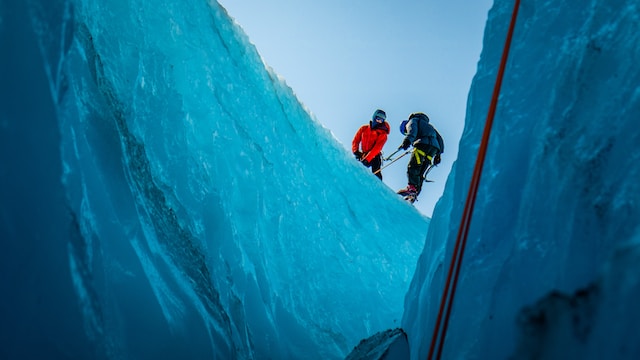
Next on our list of the best places to visit in Alaska is Seward. Seward, perched on the shores of Resurrection Bay, is a picturesque coastal town. With its stunning natural surroundings, vibrant maritime culture, and access to pristine wilderness, Seward is a treasure trove of Alaskan experiences.
Historical Background
Founded in the late 1800s as a transportation and supply hub, Seward has a storied past deeply intertwined with Alaska’s history. It was named in honor of Secretary of State William H. Seward, who negotiated the purchase of Alaska from Russia in 1867.
Geography and Climate
Seward’s location at the edge of the Kenai Peninsula provides breathtaking views of glaciers, fjords, and rugged mountains. The town experiences a maritime climate, with mild summers and relatively mild winters, thanks to the moderating influence of the nearby ocean.
Landmarks and Attractions
Seward offers a host of attractions, including the Alaska SeaLife Center, which serves as a marine research facility and visitor center. The Alaska Railroad Depot is another notable landmark, offering scenic train rides through the surrounding wilderness. The picturesque waterfront and boat harbor provide opportunities for strolling, shopping, and dining with views of Resurrection Bay.
Outdoor Activities and Recreation
The surrounding wilderness beckons outdoor enthusiasts with a multitude of activities. Seward is a haven for kayaking, fishing, hiking, and wildlife watching. The Exit Glacier, just a short drive from town, is a popular destination for hikers and nature lovers.
5. Fairbanks

Nestled in the heart of Alaska’s interior, Fairbanks is a city with a unique blend of rich history, vibrant culture, and rugged wilderness. Known as the “Golden Heart City,” it offers a gateway to the pristine landscapes and untamed beauty of the Alaskan interior.
Historical Background
Fairbanks has deep historical roots, dating back to the gold rush days of the late 1800s. It became a thriving trading post and played a pivotal role in the development of the Alaskan interior. The city’s history is showcased in its well-preserved historic district.
Geography and Climate
Located in the interior region of Alaska, Fairbanks experiences a subarctic climate, with long, cold winters and warm, sunny summers. Its unique location makes it an ideal location for experiencing the northern lights, a phenomenon that graces the skies during the winter months.
Landmarks and Attractions
Fairbanks boasts a range of attractions, including the Museum of the North, which showcases Alaska’s natural and cultural history. The city is also home to the Morris Thompson Cultural and Visitors Center, providing insights into Alaska’s indigenous cultures. Chena Hot Springs, located a short drive from Fairbanks, offers a unique opportunity to soak in natural mineral springs under the northern lights.
Outdoor Activities and Recreation
Fairbanks is a playground for outdoor enthusiasts. Whether it’s cross-country skiing in the winter or hiking in the nearby Chena River State Recreation Area during the summer, there are endless opportunities for adventure. The city is also renowned for its dog mushing and ice carving competitions.
6. Alyeska Resort

Alyeska Resort, tucked in the Chugach Mountains just outside of Anchorage, is a captivating alpine haven that beckons travelers to embrace the beauty of the Alaskan wilderness. Whether you’re seeking winter adventure or summer splendor, Alyeska offers a year-round escape into the heart of Alaska.
Historical Background
Established in the late 1950s, Alyeska Resort quickly gained recognition for its world-class skiing and outdoor recreational opportunities. Over the years, it has evolved into a premier destination for those looking to experience Alaska’s grandeur.
Geography and Climate
Nestled in the Chugach Mountains, Alyeska enjoys a snowy alpine climate, making it a winter wonderland for skiing enthusiasts. In the summer, the landscape transforms into lush greenery, with hiking trails that lead to breathtaking vistas.
Landmarks and Attractions
Alyeska Resort is renowned for its exceptional skiing and snowboarding, with diverse terrain suitable for all levels of expertise. The aerial tramway offers panoramic views of the surrounding mountains, making it a year-round attraction. Nearby attractions include the Alaska Wildlife Conservation Center, where you can get up close with native Alaskan wildlife.
Outdoor Activities and Recreation
The resort offers an array of outdoor activities, from skiing and snowboarding in the winter to hiking, mountain biking, and zip-lining during the summer months. The Alyeska Bike Park is a thrilling destination for downhill mountain biking enthusiasts.
7. The Matanuska Glacier

The Matanuska Glacier, a natural wonder located in the heart of the Matanuska-Susitna Valley, is a breathtaking testament to the power of glacial forces in shaping the Alaskan landscape. As one of Alaska’s most accessible glaciers, it offers a unique opportunity for visitors to get up close and personal with the icy giants of the Last Frontier.
Historical Background
The Matanuska Glacier has long been a point of fascination for geologists and adventurers. Its origins trace back to the Ice Age, and it stands as a living relic of ancient geological processes.
Geography and Climate
Nestled in the Chugach Mountains, the Matanuska Glacier is a sprawling river of ice surrounded by towering peaks. The climate here is characterized by cool summers and chilly winters, creating an environment where glacial ice persists throughout the year.
Landmarks and Attractions
The glacier itself is the primary attraction, stretching for miles and offering a captivating landscape of crevasses, ice formations, and glacial blue pools. Guided tours allow visitors to safely explore the glacier’s surface and witness its ever-changing features. Nearby attractions include the Matanuska River, ideal for fishing and rafting.
Outdoor Activities and Recreation
The Matanuska Glacier beckons outdoor enthusiasts with a plethora of activities, including ice climbing, hiking, and even ice cave exploration. Guided tours provide equipment and expert knowledge to navigate the glacier’s icy terrain.
8. Talkeetna

Next on our list of the best places to visit in Alaska is Talkeetna. Nestled at the base of the Alaska Range, Talkeetna is a charming and rustic town that embodies the spirit of the Alaskan wilderness. This picturesque community is known for its stunning mountain vistas, quirky charm, and status as the gateway to Denali, North America’s highest peak.
Historical Background
Talkeetna’s history is deeply intertwined with the construction of the Alaska Railroad. Established as a district headquarters in the early 20th century, the town retains much of its early 20th-century charm. It has since evolved into a vibrant hub for outdoor enthusiasts and visitors looking to explore the Denali region.
Geography and Climate
Situated on the confluence of three rivers, Talkeetna enjoys a unique geographical setting. The surrounding Alaska Range creates a stunning backdrop, while the climate features warm summers and cold, snowy winters, making it an ideal destination for year-round adventures.
Landmarks and Attractions
Talkeetna’s quaint downtown area boasts a range of attractions, including local artisan shops, galleries, and charming cafes. The Talkeetna Historical Society Museum provides insights into the town’s history. The Talkeetna Riverfront Park offers panoramic views of Denali on clear days.
Outdoor Activities and Recreation
Talkeetna is a haven for outdoor enthusiasts, with opportunities for fishing, hiking, river rafting, and flightseeing tours over Denali. It’s also a popular destination for mountaineers preparing to conquer the challenging peaks of the Alaska Range.
9. Lake Clark National Park

Lake Clark National Park, located in the southwest region of Alaska, is a pristine wilderness paradise that offers a true escape from civilization. This national park and preserve is known for its rugged beauty, stunning landscapes, and remarkable diversity of wildlife.
Historical Background
Established in 1980, Lake Clark National Park encompasses over four million acres and is named after Lake Clark, a vast body of water within its boundaries. The park’s history is deeply rooted in the cultures of the Dena’ina Athabascan and Alutiiq Native peoples.
Geography and Climate
The park showcases a diverse range of landscapes, including towering mountains, volcanic peaks, glaciers, and pristine lakes. The climate here varies from coastal to interior, with cool, wet winters and warm summers. This diversity of terrain creates unique habitats for wildlife.
Landmarks and Attractions
Lake Clark National Park is renowned for its pristine wilderness and untouched landscapes. Highlights include the majestic Lake Clark itself, the towering volcanic peaks of the Tordrillo Mountains, and the rugged coastline along the Cook Inlet. The park is also known for its rich salmon runs, which support a thriving ecosystem of bears, eagles, and other wildlife.
Outdoor Activities and Recreation
The park offers endless opportunities for outdoor adventures, including hiking, backpacking, wildlife viewing, fishing, and kayaking. The park’s remote and untouched nature allows visitors to experience the wilderness in its purest form.
10. Glacier Bay National Park
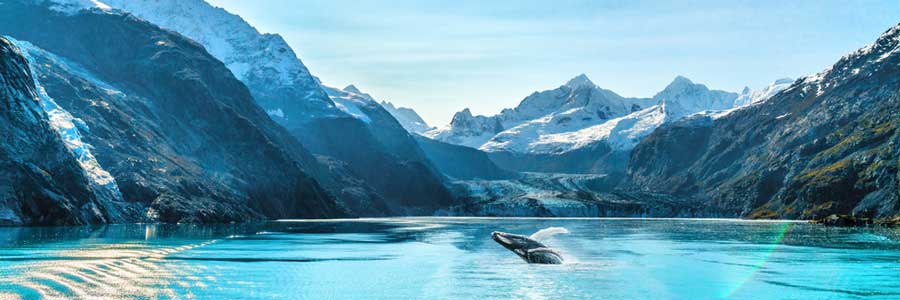
Glacier Bay National Park, situated in southeastern Alaska, is a pristine wilderness sanctuary that showcases the dramatic effects of glacial activity. As a designated UNESCO World Heritage Site, it is celebrated for its towering glaciers, diverse wildlife, and captivating landscapes.
Historical Background
The history of Glacier Bay is a testament to the transformative power of nature. In the late 18th century, the bay was entirely covered by a glacier that has since receded more than 65 miles, revealing the stunning fjords and inlets that exist today.
Geography and Climate
The park encompasses over 3.3 million acres, featuring a range of landscapes from deep fjords and temperate rainforests to towering mountains. The climate is maritime, with cool, wet weather and a mix of coastal and rainforest ecosystems.
Landmarks and Attractions
The most iconic feature of Glacier Bay is the Margerie Glacier, a colossal wall of ice that calving into the sea is a breathtaking spectacle. The bay is also known for its rich marine life, including humpback whales, seals, sea otters, and countless seabirds.
Outdoor Activities and Recreation
Glacier Bay offers visitors a chance to experience its pristine wilderness through activities like kayaking, hiking, camping, and boat tours. The park’s pristine landscapes are a canvas for outdoor adventures.
11. The Kenai Peninsula

The Kenai Peninsula, often referred to as “Alaska’s Playground,” is a captivating region located in the south-central part of the state. Renowned for its stunning landscapes, abundant wildlife, and diverse outdoor adventures, it’s a destination that beckons travelers to explore the wild beauty of the Last Frontier.
Historical Background
The Kenai Peninsula has a rich history dating back to indigenous Alaskan cultures. It became a center for Russian fur trading in the 18th century and later played a role in the Alaska Gold Rush. Today, it’s a blend of heritage and natural wonders.
Geography and Climate
Encompassing approximately 25,000 square miles, the peninsula boasts diverse geography, from towering mountains to coastal fjords. The climate varies from maritime along the coast to subarctic further inland, making it suitable for year-round adventures.
Landmarks and Attractions
The Kenai Peninsula is a treasure trove of natural wonders. The Kenai Fjords, Resurrection Bay, and Prince William Sound offer spectacular coastal scenery and opportunities for whale watching and glacier exploration. The town of Seward serves as a gateway to these attractions.
Outdoor Activities and Recreation
This region is a paradise for outdoor enthusiasts. Hiking, fishing, wildlife viewing, and kayaking are just a few of the adventures awaiting visitors. The Russian River provides some of the best salmon fishing in the world, while the Chugach National Forest offers extensive hiking trails.
12. Prince William Sound

Next on our list of the best places to visit in Alaska is Prince William Sound. This pristine and rugged coastal region in southern Alaska, is a place of astounding natural beauty and ecological richness. Known for its fjords, glaciers, and marine wildlife, this remote area beckons adventurers and nature enthusiasts to explore its breathtaking landscapes.
Historical Background
The history of Prince William Sound is intertwined with the indigenous cultures of the Chugach people, who have inhabited the region for thousands of years. Russian explorers and later American settlers further influenced its development. Today, it’s recognized as one of Alaska’s most treasured wilderness areas.
Geography and Climate
Prince William Sound is characterized by its fjords, islands, and towering coastal mountains. The climate is maritime, with mild, rainy winters and cool, sunny summers. The combination of fjords and glaciers creates a dynamic and ever-changing landscape.
Landmarks and Attractions
The sound is dotted with glaciers, some of the most famous being the Columbia Glacier, the Shoup Glacier, and the Meares Glacier. These icy behemoths calve into the ocean, creating dramatic displays. The sound is also a haven for marine wildlife, including humpback whales, orcas, sea otters, and puffins.
Outdoor Activities and Recreation
Prince William Sound is an outdoor enthusiast’s dream. Activities such as kayaking, fishing, wildlife watching, and glacier cruises offer a unique opportunity to experience its pristine wilderness. Hiking trails provide access to panoramic views of glaciers and fjords.
13. Homer
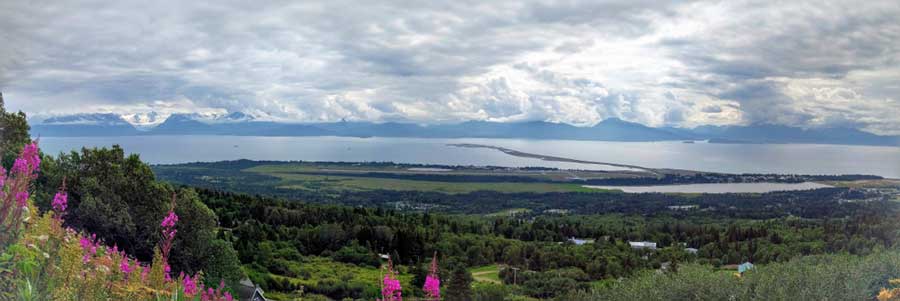
Homer, often referred to as the “Halibut Fishing Capital of the World,” is a vibrant coastal city located at the southern tip of the Kenai Peninsula. This charming Alaskan town is renowned for its stunning scenery, thriving arts scene, and vibrant community spirit.
Historical Background
Homer’s history is deeply rooted in fishing and exploration. The city’s namesake, Homer Pennock, was an early homesteader who established a trading post in the area. Over the years, it has evolved into a hub for commercial and sport fishing.
Geography and Climate
Perched on the shores of Kachemak Bay, Homer enjoys a maritime climate with mild summers and snowy winters. The city’s stunning backdrop includes the Kenai Mountains and the nearby Kachemak Bay State Park.
Landmarks and Attractions
Homer is famous for its scenic beauty, and landmarks like the Homer Spit, a long, narrow piece of land extending into Kachemak Bay, offer spectacular views. The Pratt Museum provides insights into the region’s natural and cultural history, while the Homer Art Gallery showcases the town’s thriving arts community.
Outdoor Activities and Recreation
The city’s location along the shores of Kachemak Bay makes it an ideal destination for outdoor enthusiasts. Fishing charters, kayaking, hiking, and wildlife viewing are popular activities. Homer is also known for its proximity to bear viewing opportunities in Katmai National Park and Lake Clark National Park.
14. Kodiak Island

Kodiak Island, situated in the Gulf of Alaska, is a remote and captivating wilderness destination that embodies the untamed spirit of the Last Frontier. Known for its dramatic landscapes, rich cultural heritage, and abundant wildlife, Kodiak Island offers a truly unique Alaskan experience.
Historical Background
Kodiak Island has a storied history that includes the indigenous Alutiiq people, Russian exploration, and American settlement. The island’s cultural heritage is celebrated through local festivals, museums, and historical sites.
Geography and Climate
The island’s geography is characterized by rugged mountains, lush forests, and a jagged coastline. The maritime climate results in mild, wet winters and cool, rainy summers. This climate sustains Kodiak’s lush flora and diverse fauna.
Landmarks and Attractions
Kodiak Island is known for its stunning landscapes, including the towering peaks of the Kodiak Mountains and the verdant Kodiak National Wildlife Refuge. Fort Abercrombie State Historical Park offers hiking trails and a glimpse into the island’s World War II history. The Kodiak Fisheries Research Center provides insights into the region’s fishing industry.
Outdoor Activities and Recreation
Outdoor enthusiasts will find plenty to do on Kodiak Island. Hiking, fishing, kayaking, and wildlife viewing are among the popular activities. Kodiak is renowned for its world-class bear viewing opportunities in locations like Katmai National Park and the Kodiak National Wildlife Refuge.
15. Katmai National Park
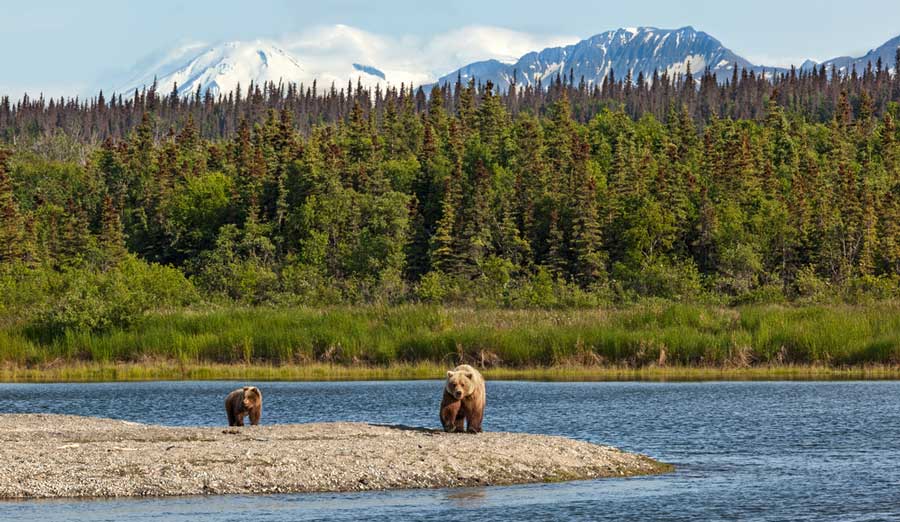
Katmai National Park, located in southern Alaska, is a pristine wilderness sanctuary that captures the essence of untamed natural beauty. Known for its majestic brown bears, stunning landscapes, and active volcanoes, this remote national park is a testament to the wild heart of the Last Frontier.
Historical Background
Katmai’s history is shaped by geological forces, particularly the eruption of Novarupta in 1912, which dramatically altered the region’s landscape. The park’s name, “Katmai,” is derived from the native Alutiiq people and means “red salmon,” reflecting the importance of salmon to the local ecosystems.
Geography and Climate
The park encompasses over 4 million acres of wilderness, featuring rugged mountains, pristine lakes, and abundant rivers. The climate is subarctic, characterized by cold, snowy winters and mild summers. The dynamic geography includes active volcanoes, such as Mount Katmai and Novarupta.
Landmarks and Attractions
Katmai is famous for its brown bear population, particularly in areas like Brooks Camp, where bears congregate to catch salmon during the summer salmon runs. The Valley of Ten Thousand Smokes is another highlight, showcasing the otherworldly landscapes created by the 1912 volcanic eruption.
Outdoor Activities and Recreation
Outdoor enthusiasts are drawn to Katmai for its hiking trails, wildlife viewing opportunities, and fishing. Fishing for salmon is a popular activity, and the park offers a unique fly-in wilderness experience for anglers.
16. Wrangell-St. Elias National Park
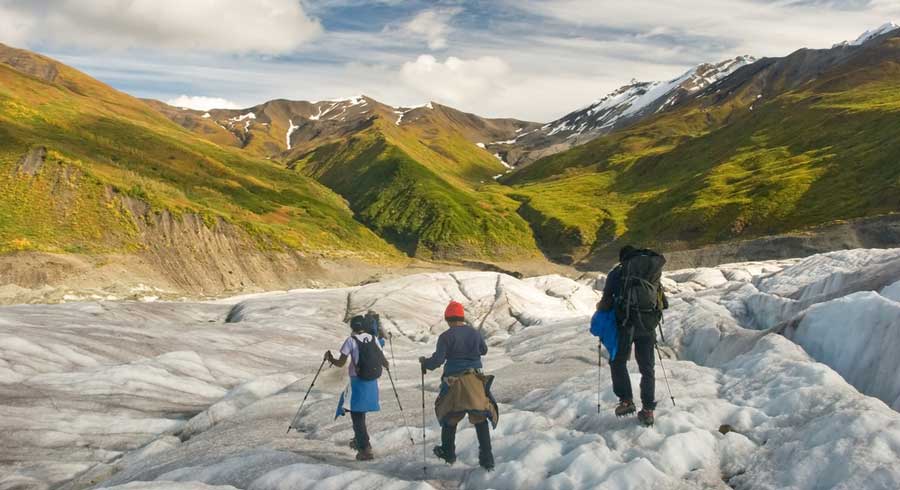
Wrangell-St. Elias National Park is one of the best places to visit in Alaska. Located in southeastern Alaska, it is a vast and rugged wilderness that showcases the grandeur of the Alaskan frontier. As the largest national park in the United States, it’s a land of superlatives, featuring towering mountains, immense glaciers, and a rich tapestry of wildlife.
Historical Background
The history of Wrangell-St. Elias is deeply intertwined with indigenous cultures, early exploration, and gold mining. The park is named after two of its major mountain ranges, the Wrangell Mountains and the St. Elias Mountains.
Geography and Climate
Encompassing over 13 million acres, the park boasts diverse geography, including nine of the 16 highest peaks in the United States. The climate varies from maritime along the coast to subarctic further inland. It’s a land of extremes, with towering peaks and immense glaciers.
Landmarks and Attractions
The park’s highlights include the majestic Mount St. Elias, the Malaspina Glacier, and the Kennecott Mines National Historic Landmark. The park’s immense size means that it houses numerous hiking trails, wilderness rivers, and opportunities for wildlife viewing.
Outdoor Activities and Recreation
Outdoor enthusiasts flock to Wrangell-St. Elias for its hiking, mountaineering, fishing, and river rafting. The park is a haven for wildlife, with opportunities to observe grizzly bears, Dall sheep, wolves, and a variety of bird species.
Read also: 15 Most Diverse Cities In The World In 2023 | With Photos
17. Kennecott Mines National Historical Landmark

Kennecott Mines National Historical Landmark, located within Wrangell-St. Elias National Park in southeastern Alaska, is a place of historical significance and industrial intrigue. It offers a captivating glimpse into Alaska’s mining past and the challenges faced by early prospectors and miners.
Historical Background
The history of Kennecott Mines dates back to the early 20th century when rich copper deposits were discovered in the region. The mining operations here were once the richest known concentration of copper in the world. The name “Kennecott” was the result of a clerical error, but it has stuck ever since.
Geography and Climate
Nestled amidst the stunning landscapes of Wrangell-St. Elias National Park, Kennecott Mines features dramatic mountain scenery and glacial landscapes. The climate is subarctic, with cold winters and cool summers. This region is known for its towering peaks and immense glaciers.
Landmarks and Attractions
The primary attraction at Kennecott Mines is the historic mining town itself. Visitors can explore the well-preserved structures, including the mill, bunkhouses, and company store. The Kennecott Mines Visitor Center provides insights into the town’s history and the challenges faced by miners in this remote wilderness.
Outdoor Activities and Recreation
While the primary focus of Kennecott Mines is on its historical significance, the surrounding Wrangell-St. Elias National Park offers numerous outdoor activities such as hiking, camping, and wildlife viewing. The Root Glacier, accessible from Kennecott, is a popular destination for ice hiking and exploration.
18. Gates of the Arctic National Park and Preserve
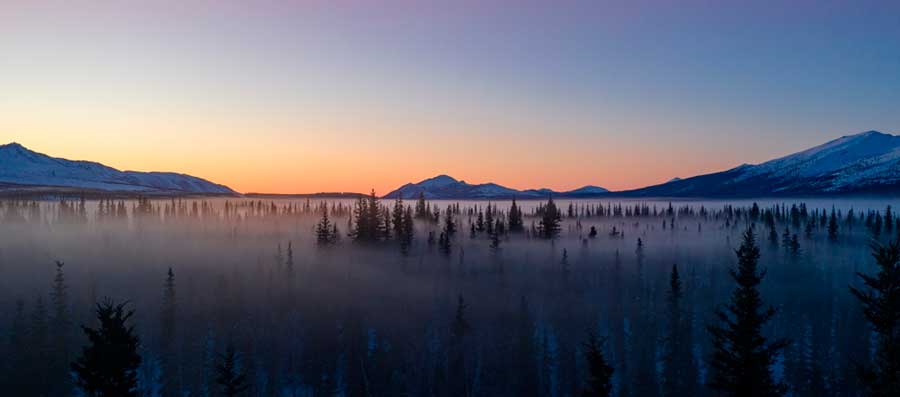
Gates of the Arctic National Park and Preserve, located in northern Alaska, is a true wilderness frontier that beckons those seeking an authentic and remote Alaskan adventure. As one of the least-visited national parks in the United States, it offers an untouched and untamed landscape where the spirit of the Last Frontier thrives.
Historical Background
The park’s history is deeply rooted in the traditional cultures of Alaska’s indigenous Athabaskan and Inupiat peoples. It was established as a national park and preserve in 1980, encompassing over 8 million acres of pristine wilderness.
Geography and Climate
Gates of the Arctic is characterized by its rugged mountain ranges, pristine rivers, and vast tundra expanses. The park features a subarctic climate with long, harsh winters and short, cool summers. It’s a land of extremes, with 24-hour daylight in summer and prolonged darkness in winter.
Landmarks and Attractions
The park’s main attractions are its unspoiled natural landscapes, including the Brooks Range, the Arrigetch Peaks, and the Alatna Wild River. There are no roads or established trails, making it a true wilderness experience for backpackers and outdoor enthusiasts.
Outdoor Activities and Recreation
Gates of the Arctic offers endless opportunities for hiking, backpacking, fishing, and wildlife viewing. Visitors can explore the park’s remote wilderness, encounter herds of caribou, and witness the remarkable spectacle of the northern lights.
19. Chena Hot Springs
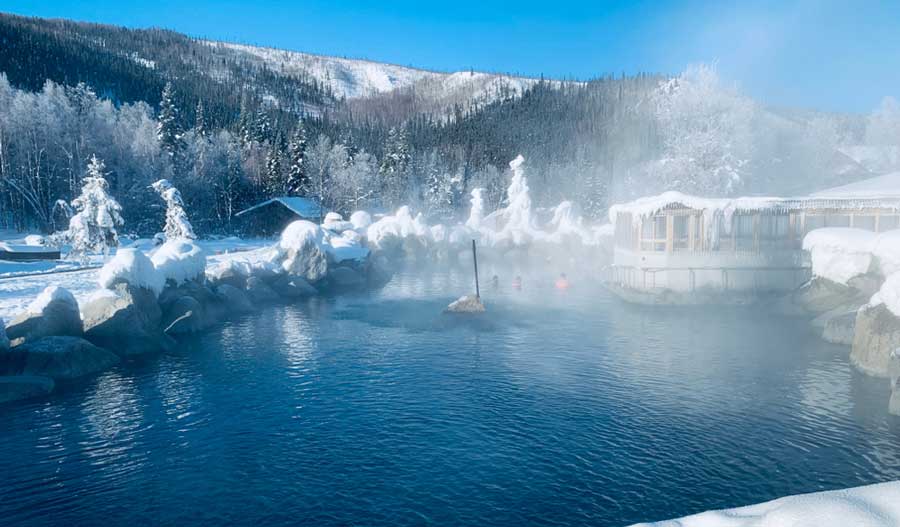
Chena Hot Springs, located in the heart of the Alaskan wilderness, is a natural wonder and a sanctuary of relaxation. This remote destination is celebrated for its rejuvenating hot springs, stunning northern lights displays, and its role as a gateway to the rugged beauty of Alaska’s interior.
Historical Background
The history of Chena Hot Springs is rich, dating back to the early 20th century when gold miners and explorers sought respite in its soothing waters. The resort itself was established in the 1950s and has since evolved into a unique retreat in the wilderness.
Geography and Climate
Nestled amidst the boreal forest of the Alaska Range, Chena Hot Springs enjoys a subarctic climate with cold winters and mild summers. The resort is surrounded by pristine wilderness, creating an idyllic setting for relaxation and adventure.
Landmarks and Attractions
The star attraction at Chena Hot Springs is the natural geothermal hot springs, which are renowned for their therapeutic properties. The resort offers a variety of pools, including an outdoor rock lake and an indoor pool, where guests can soak while gazing at the stars or the dancing northern lights.
Outdoor Activities and Recreation
Chena Hot Springs is not just about relaxation; it’s also a hub for outdoor adventures. Guests can enjoy activities like dog sledding, snowmobiling, hiking, and wildlife viewing. The clear skies in this remote location make it a prime spot for northern lights viewing during the winter months.
20. Utqiagvik (formerly Barrow)
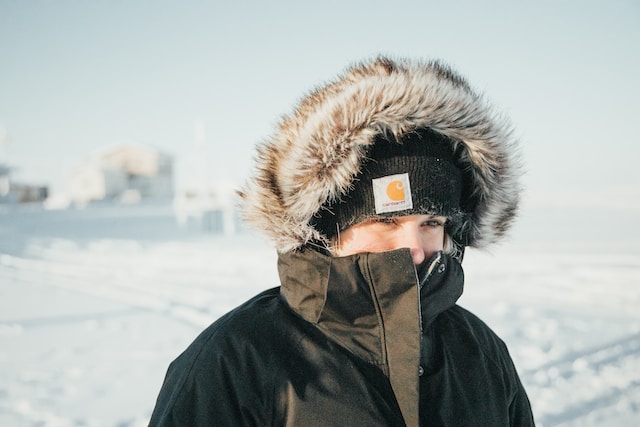
Utqiaġvik, formerly known as Barrow, is a unique and culturally rich city located on the northernmost tip of Alaska and the United States. Renowned for its Arctic landscapes, vibrant indigenous culture, and remarkable wildlife, Utqiaġvik offers a rare opportunity to experience life at the top of the world.
Historical Background
Utqiaġvik’s history is deeply rooted in the Inupiaq Eskimo culture, dating back thousands of years. The city’s name, “Utqiaġvik,” means “place where snowy owls are hunted” in the native Inupiaq language. European contact and whaling activities in the 19th century influenced the city’s development.
Geography and Climate
Utqiaġvik’s geography is dominated by the Arctic Ocean, sea ice, and tundra. The climate is Arctic, with extremely cold winters and cool summers. The city experiences polar day and polar night, with 24-hour sunlight in summer and complete darkness in winter.
Landmarks and Attractions
While Utqiaġvik is not known for traditional tourist attractions, the city offers a unique opportunity to immerse oneself in indigenous Inupiaq culture. The Inupiat Heritage Center provides insights into the native way of life, and visitors can witness the beauty of the Arctic Ocean and its wildlife.
Outdoor Activities and Recreation
Outdoor activities in Utqiaġvik revolve around the Arctic environment. Snowmobiling, dog sledding, and ice fishing are popular winter pursuits, while hiking and wildlife viewing can be enjoyed during the summer months. The city is also a prime location for viewing the northern lights.
21. The Alaska Highway

Last but not least on our list of the best places to visit in Alaska is the Alaska Highway. The Alaska Highway, often referred to as the Alcan Highway, is a legendary and iconic road trip route that stretches from Dawson Creek, British Columbia, in Canada to Delta Junction, Alaska, in the United States. This historic highway is a gateway to the Last Frontier, taking travelers on a journey through some of North America’s most breathtaking landscapes.
Historical Background
The Alaska Highway has a storied history, originating during World War II when it was constructed as a military supply route to Alaska. Today, it stands as a testament to human determination and engineering prowess.
Geography and Climate
The highway traverses diverse terrain, from the Canadian Rockies to the subarctic wilderness of Alaska. The climate varies significantly along the route, from temperate zones in British Columbia to subarctic conditions in the Yukon and Alaska.
Landmarks and Attractions
The Alaska Highway is dotted with natural wonders and cultural sites. Muncho Lake, Liard Hot Springs, and Kluane National Park are just a few of the natural attractions along the way. Towns like Whitehorse and Tok offer insights into northern culture and hospitality.
Outdoor Activities and Recreation
Outdoor enthusiasts will find an abundance of activities along the highway, including hiking, fishing, wildlife viewing, and camping. The highway provides access to some of North America’s most remote and pristine wilderness areas.
Frequently Asked Questions
What are Alaska’s top tourist destinations?
Anchorage, Denali National Park, the Inside Passage, and the Kenai Fjords are the top destinations in Alaska.
Where should I fly to if I want to visit Alaska?
The finest airport to fly into for an Alaskan holiday is Anchorage. With the most flights and a prime position for seeing the rest of the state, it serves as an excellent hub.
Is it expensive to travel to Alaska?
With a cost of living 24% more than the national average, Alaska is one of the most expensive states in the union. To assist keep the costs of your trip down, a lot of inexpensive travel options can be discovered online or through an Alaskan travel agent.
What attire should visitors to Alaska bring?
The weather in Alaska is notoriously unpredictable, and it rarely rains. You should therefore be ready for everything. Layerable clothing, such thin t-shirts, flannels, long sleeve shirts, and sweatshirts are things you should include. A thick sweater, a raincoat, and waterproof shoes are also recommended.
See ALSO: 20 Futuristic Cities In The World In 2023 | With Photos
Conclusion
Alaska, with its breathtaking landscapes and rugged wilderness, is a place of untamed natural beauty. From the towering peaks of Denali National Park to the icy wonders of Glacier Bay, this state embodies the spirit of adventure and the call of the wild. As we conclude this exploration of the best places to visit in Alaska, we hope you are in awe of the diversity and magnificence that Alaska has to offer.
